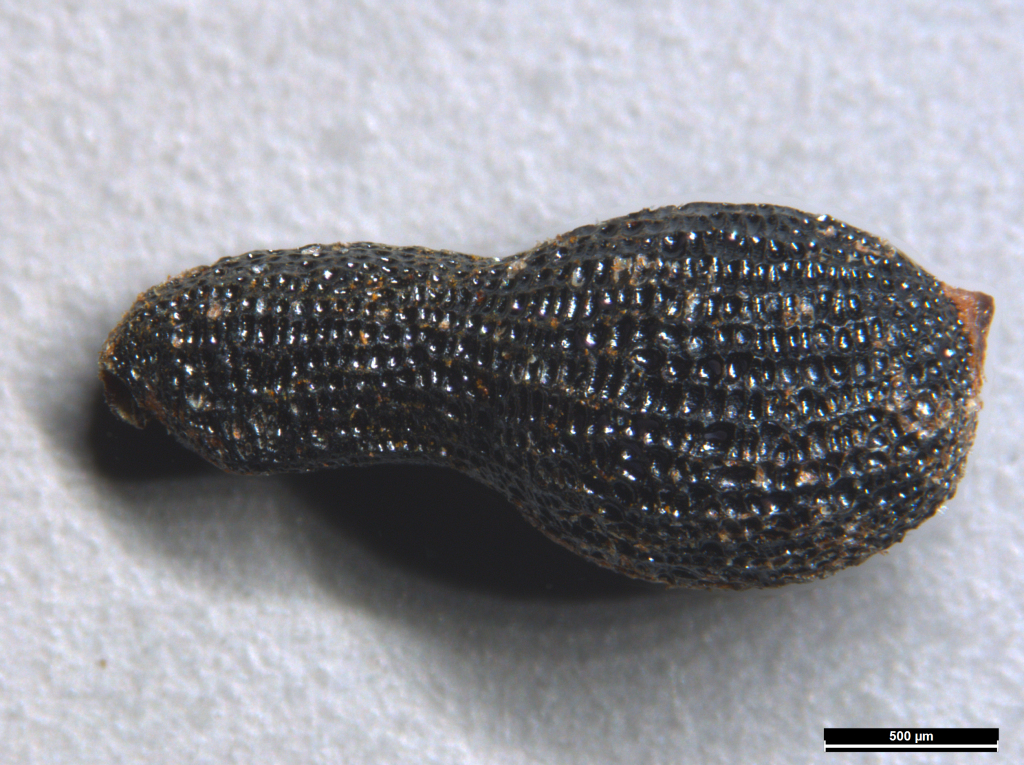Pimelea micrantha
F.Muell. ex Meisn. Silky Rice-flowerSubshrub, 10–40 cm high; young stems densely white-hairy. Leaves alternate or opposite, shortly petiolate, narrowly elliptic or elliptic, 3–8 mm long, 1–3 mm wide, concolorous, pale grey-green, densely hairy when young. Inflorescence terminal or axillary, of 1 or more compact, usually 3–8-flowered heads; involucral bracts absent or not differentiated from leaves. Flowers bisexual, densely hairy outside, glabrous inside; floral tube c. 3 mm long, style-portion poorly defined, circumscissile above ovary or persistent, persistent base grey in fruit; sepals erect, c. 0.5 mm long, reddish or yellow to brown; pedicel hairy; stamens inserted below sepals, almost sessile in throat; anthers opening somewhat laterally; style not exserted. Fruit dry, enclosed; seed pear-shaped. Flowers Sep.–Dec.
LoM, MuM, Wim, VVP, VRiv, RobP, MuF, Gold, GGr, NIS. Also WA, SA, NSW. Scattered but rather uncommon in the north and north-west of the state (mostly on sand or heavy red clay-loam overlying limestone), with an outlying occurrence along the basalt escarpment of Taylors Creek, Keilor.
Similar to P. curviflora but leaves densely hairy when young, flowers shorter with the style-portion of floral tube poorly defined (less than 1 mm long), the sepals always less than 1 mm long and erect rather than spreading, and the seed pear-shaped rather than ovoid.
Entwisle, T.J. (1996). Thymelaeaceae. In: Walsh, N.G.; Entwisle, T.J., Flora of Victoria Vol. 3, Dicotyledons Winteraceae to Myrtaceae, pp. 912–930. Inkata Press, Melbourne.
 Spinning
Spinning



